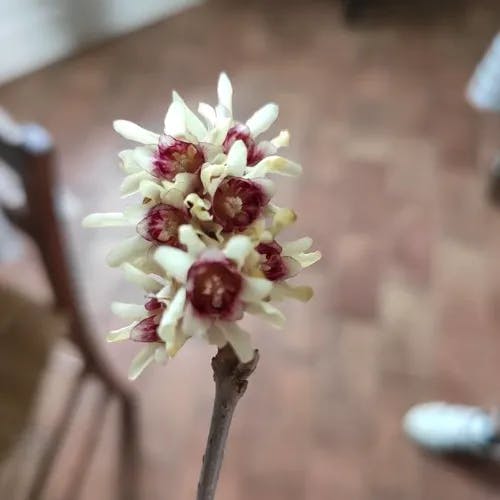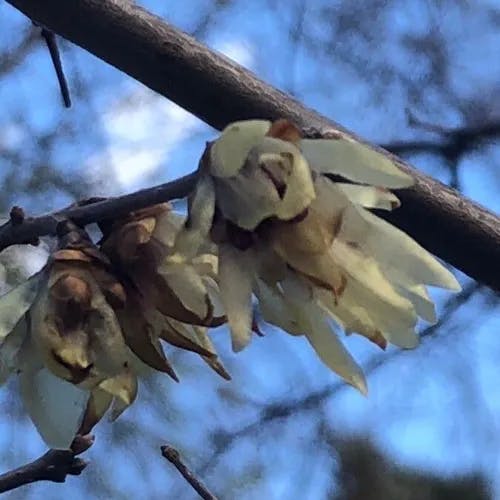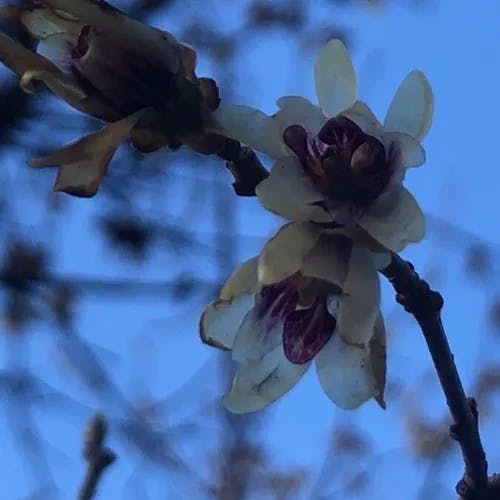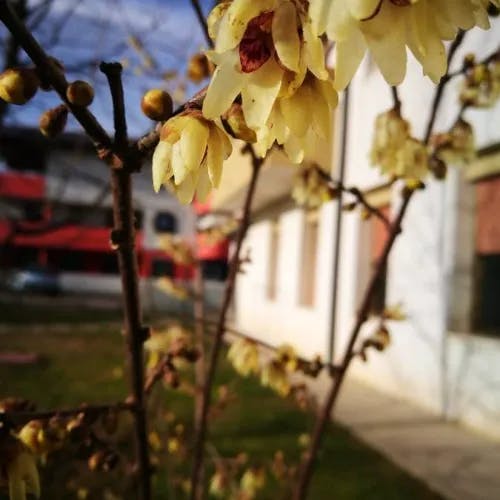Chimonanthus praecox, commonly known as Wintersweet, is a deciduous shrub native to China. It belongs to the Calycanthaceae family and is known for its fragrant, waxy flowers that bloom in winter. The plant typically grows to a height of 2-4 meters, but can reach up to 13 meters in ideal conditions. It has a broad, rounded form with a dense, bushy habit. The leaves are lanceolate, dark green, and glossy, measuring 5-29 cm in length. The flowers of Chimonanthus praecox are its most distinctive feature. They are bell-shaped, with a diameter of 2-3 cm, and have a unique structure with numerous yellow inner petals and a few outer petals that are a dull, purplish-brown color. The flowers emit a strong, sweet fragrance, which is particularly noticeable on warm winter days. The fruit of the Wintersweet is a dry, dehiscent capsule that contains numerous seeds. It is brown, oblong, and measures about 3 cm in length. The fruit ripens in late summer to early autumn. Chimonanthus praecox is relatively easy to grow, preferring a sunny or partially shaded position with well-drained soil. It is hardy to USDA zones 7-9 and can tolerate temperatures as low as -15°C. The plant is generally pest-free and requires little maintenance, although it benefits from regular pruning to maintain its shape. In terms of symbolism, Wintersweet is often associated with endurance and hope, as it blooms in the midst of winter. There are several cultivars of Chimonanthus praecox, including 'Grandiflorus', which has larger flowers, and 'Luteus', which has yellow flowers. In conclusion, Chimonanthus praecox is a unique and attractive plant that offers winter interest and fragrance. Its ease of cultivation and minimal maintenance requirements make it a popular choice for gardens and landscapes.
0
0












